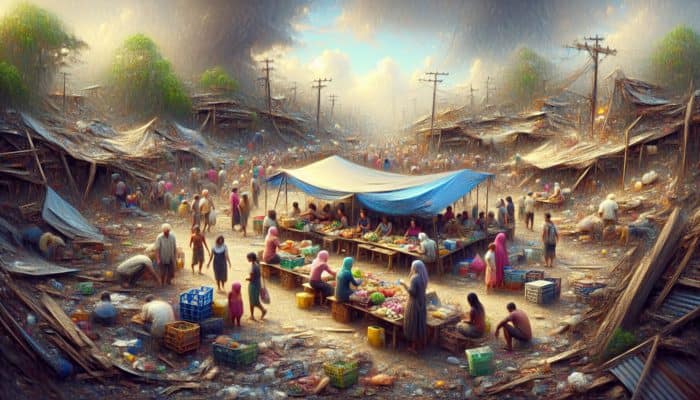During the Day of the Dead, San Miguel de Allende transforms into a vibrant spectacle of culture and tradition, with La Catrina at its core, representing the intricate relationship between life, death, and the rich tapestry of Mexican culture. Originally conceived in 1910 by José Guadalupe Posada as a satirical commentary on the upper class of Mexico, La Catrina has evolved into an iconic figure celebrated and cherished by many. In San Miguel de Allende, her presence is felt everywhere—on ofrendas, during lively parades, and through intricate face painting—embodying the Mexican ethos of embracing death as an essential part of life’s journey. Explore the profound connection that La Catrina fosters between the living and the deceased, establishing her as a central figure in this culturally rich celebration.
Unearthing the Fascinating History and Cultural Significance of La Catrina
La Catrina, a striking symbol of elegance intertwined with mortality, has her origins rooted in 1910, manifesting as a satirical lithograph created by the talented José Guadalupe Posada. Initially referred to as La Calavera Garbancera, she was designed to mock the elite class of Mexico, often portrayed as individuals who abandoned their indigenous roots for European customs. This skeletal figure, elegantly adorned with a grand hat, serves as a poignant reminder of the universal truth that, in death, social distinctions dissolve. This powerful imagery has become a cornerstone of Mexican culture, particularly evident during the Day of the Dead festivities that are celebrated in vibrant cities like San Miguel de Allende, where her spirit continues to thrive and inspire.
Delving into the Artistic Genius of José Guadalupe Posada and the Creation of La Calavera Garbancera
The origins of La Catrina can be traced back to the creative genius of José Guadalupe Posada, whose artistic vision gave birth to La Calavera Garbancera as a deliberate critique of the Mexican elite. His skeletal portrayal, clad in fashionable attire, targeted those who imitated European styles while neglecting their indigenous heritage. This powerful representation became a symbol of equality in death and deeply resonated within Mexican culture and the Day of the Dead traditions that thrive in San Miguel de Allende. Posada’s artwork not only challenges societal norms but also encourages profound reflection on identity and the significance of heritage in a rapidly changing world, making it an enduring part of cultural discourse.
La Catrina: A Bold and Provocative Satirical Commentary on Mexican Society
One of the most compelling features of La Catrina is her role as a social commentator. Posada skillfully utilized her image to highlight the hypocrisy prevalent among the elite during the Porfirio Díaz era, a time marked by stark inequality and rampant corruption. Draped in European fashion, her skeletal form serves as a stark reminder of the fleeting nature of wealth and societal status. This critical commentary remains relevant today, as La Catrina continues to symbolize the unity of all individuals when confronted with the inevitability of mortality.
Delving deeper into the essence of satire reveals how La Catrina’s imagery boldly confronted societal conventions. Posada’s work was a direct challenge to the corruption and inequality that defined the Díaz regime, favoring the affluent while neglecting the marginalized. By representing death as the ultimate equalizer, La Catrina emerged as a potent catalyst for social reflection. Her evolution into a cultural icon, particularly in San Miguel de Allende, highlights the enduring significance of this message, intertwining humor with serious contemplation in the celebration of life and death.
![]()
Diego Rivera’s Artistic Influence: Elevating La Catrina to an Icon of Cultural Significance
While La Catrina began as a satirical figure, her transformation into a revered cultural icon was significantly influenced by Diego Rivera. Rivera’s artistic vision propelled her from a mere critique of societal elitism to a representation of authentic Mexican identity, harmonizing indigenous and European influences. His impactful work solidified La Catrina’s role in the Día de los Muertos celebrations, intricately connecting her to themes of life, death, and cultural heritage that resonate deeply within the community, making her an integral part of the festivities.
Analyzing Rivera’s Mural “Dream of a Sunday Afternoon in Alameda Park” Featuring La Catrina
In 1947, Rivera’s mural, “Dream of a Sunday Afternoon in Alameda Park,” prominently features La Catrina, positioned alongside historical figures and a youthful depiction of Rivera himself. This mural not only accentuates her elegance but also weaves her into Mexico’s intricate historical narrative and cultural evolution. By embedding her within this expansive storyline, Rivera ensured her legacy as one of unity and contemplation regarding mortality, establishing her as a timeless figure within Mexican art and culture that continues to inspire artists and audiences alike.
La Catrina’s Transformation into a Vital Cultural Symbol within the Tapestry of Mexican Heritage
The impact of Rivera’s mural was profound, firmly establishing La Catrina as an essential cultural symbol. His portrayal of her within a historical context linked her to a broader narrative of Mexican identity, transforming her into a source of pride and reflection for the nation. Today, La Catrina exemplifies the celebration of life and death, capturing the essence of Día de los Muertos in San Miguel de Allende and beyond, symbolizing the interconnectedness of past and present traditions.
During the afternoon festivities in San Miguel de Allende, La Catrina often takes center stage, her figure serving as a poignant reminder of the city’s rich cultural roots and traditions. Her transformation from a figure of satire to a symbol of cultural pride illustrates the resilience of Mexican traditions and the importance of honoring both life and death. Rivera’s mural ensured her place in history, solidifying her status as a lasting icon of Mexican heritage and the vibrant celebrations of Día de los Muertos.
Understanding the Multifaceted Symbolism Behind La Catrina
La Catrina is widely regarded as a powerful symbol of equality, serving as a poignant reminder that death unifies everyone, irrespective of social status. She embodies the Mexican acceptance of mortality, seamlessly blending humor, artistry, and reverence for the life-death continuum. In San Miguel de Allende, her presence during the Day of the Dead festivities underscores the importance of honoring ancestors while celebrating the transient beauty of life, creating a powerful connection between generations.
Gaining Insight into the Mexican Perspective on Life and Death Through La Catrina
To fully appreciate La Catrina, one must embrace the Mexican worldview on life and death. In Mexican culture, death is not something to be feared; rather, it is celebrated as an integral aspect of existence. Within San Miguel de Allende, this ethos is vividly illustrated through vibrant altars, pathways adorned with marigolds, and lively gatherings honoring those who have passed. La Catrina embodies this philosophy, reminding us to cherish life while accepting its inevitable conclusion, fostering a sense of community and shared understanding in the face of mortality.
Exploring the Unique Fusion of Indigenous and European Traditions in La Catrina’s Symbolism
La Catrina stands as a unique cultural fusion, rooted in both Aztec and Catholic traditions. The Aztecs viewed death as a transitional phase rather than an end, while Catholicism introduced rituals such as All Saints’ Day. In San Miguel de Allende, this amalgamation is prominently displayed in ofrendas, where marigolds, candles, and photographs of loved ones create a bridge connecting the living with the deceased, showcasing a beautiful blend of traditions that honors cultural heritage.
The essence of life in San Miguel de Allende during the Día de los Muertos serves as a testament to this cultural blend. Marigolds, known as Cempasúchil, are believed to guide spirits back to the realm of the living, while pan de muerto and sugar skulls symbolize the sweetness of life. La Catrina occupies a central position in these traditions, exemplifying the harmony between indigenous and European influences. Her existence serves as a reminder that death is not the end, but rather an extension of life’s journey, reinforcing the collective memory of those who have passed.
![]()
La Catrina’s Integral Role in the Lively Celebrations of San Miguel de Allende
In contrast to other regions, San Miguel de Allende celebrates La Catrina as a dynamic symbol of its Day of the Dead festivities. Her iconic figure is prevalent in parades, artistic installations, and face painting, highlighting the fusion of tradition and creativity within this UNESCO World Heritage city. La Catrina’s presence amplifies the unique charm of San Miguel de Allende, forging connections between locals and visitors while deepening their understanding of the profound themes of life, death, and remembrance, making the festival a truly immersive experience.
Acknowledging La Catrina’s Essential Role in Day of the Dead Celebrations
On the Day of the Dead, La Catrina becomes a vital link between the living and the deceased in San Miguel de Allende. She guides processions, graces altars, and inspires elaborate costumes. Her elegant yet skeletal form serves as a reminder that death should not be feared; rather, it should be celebrated as a natural aspect of life’s journey. In San Miguel de Allende, she embodies the joy, humor, and reverence that define this cherished tradition, fostering a spirit of togetherness during the festivities.
Immersing Yourself in the Experience of Ofrendas, Pan de Muerto, and Marigold Flowers in San Miguel de Allende
If you visit San Miguel de Allende during the Day of the Dead, you will encounter ofrendas adorned with pan de muerto and marigold flowers, essential components of the celebration. These offerings honor loved ones, with the sweet bread symbolizing the joys of life and the marigolds guiding spirits with their bright colors and fragrant aromas. Together, they create a sensory experience that connects you to the spiritual essence of this festival, enveloping you in its rich cultural heritage.
The celebrations in San Miguel de Allende would be incomplete without these cherished traditions. The ofrendas are intricately crafted, often showcasing photographs, candles, and favorite foods of the departed. The pan de muerto, characterized by its distinctive shape and taste, is a staple found in every home and marketplace. The marigold flowers, known as cempasúchil, are believed to illuminate the path for returning spirits. These elements blend to create a visually stunning and deeply meaningful celebration that resonates with both locals and visitors.
![]()
The Transformative Evolution of La Catrina’s Meaning: From Satire to Cultural Icon
It is crucial to acknowledge that La Catrina’s meaning has undergone a dramatic evolution over time. Initially conceived as a satirical figure critiquing the elite, she has grown into a beloved representation of Día de los Muertos. Today, she symbolizes the delicate balance between life and death, beautifully merging humor, aesthetics, and cultural pride. In San Miguel de Allende, her presence during Day of the Dead festivities emphasizes her role as a unifying figure, connecting individuals to their heritage and the memories of loved ones who have departed, fostering a sense of community and belonging.
Tracing the Journey: La Catrina’s Shift from Satirical Figure to Celebrated Icon of Mexican Culture
The metamorphosis of La Catrina from a satirical figure to a celebratory icon epitomizes her cultural significance. Created by José Guadalupe Posada as a means to mock the elite, she was later re-envisioned by Diego Rivera to embody Mexican identity. In San Miguel de Allende, her image now graces ofrendas and parades, celebrating life and death with vibrant colors and spirited festivities that resonate with all who partake in the celebrations, reinforcing her status as a timeless emblem of cultural pride.
La Catrina: A Profound Symbol of Unity, Remembrance, and Celebration within Mexican Traditions
At the heart of La Catrina’s role in San Miguel de Allende lies the essence of remembrance. She serves as a bridge connecting the living and the departed, encouraging you to honor your ancestors while celebrating their lives. Her presence during Día de los Muertos fosters a sense of unity, as communities come together to create ofrendas, share stories, and recognize the cycle of life and death. This profound symbolism is deeply embedded in the traditions of San Miguel de Allende, where La Catrina’s graceful figure, often adorned with marigolds and flickering candles, guides spirits back to the realm of the living during the Day of the Dead.
Her role in uniting families and communities serves as a powerful reminder of the importance of cultural heritage. By participating in these celebrations, you not only honor the deceased but also reinforce your connection to Mexican traditions and values, creating a lasting impact on the cultural landscape.
The Lasting Impact of La Catrina on Modern Art and Cultural Expressions
Your fascination with La Catrina transcends her historical roots, as she continues to inspire contemporary art and culture. Her iconic skeletal form, adorned with elegant attire, has become a muse for artists, designers, and creators worldwide. In San Miguel de Allende, her influence is especially pronounced during the Day of the Dead, where her image is reinterpreted in murals, sculptures, and even fashion. La Catrina’s unique blend of satire and beauty resonates deeply, serving as a reminder of universal truths regarding life, death, and equality, while encouraging artistic exploration and expression.
The Enduring Influence of La Catrina on Contemporary Artists and Their Works
La Catrina’s impact on modern artists is remarkable, as her image has been reimagined in myriad forms, from vibrant street art to high-end fashion. Within the creative community of San Miguel de Allende, local artists frequently integrate her likeness into their work, merging traditional motifs with contemporary styles. Her skeletal representation serves as a canvas for artistic expression, allowing creators to explore themes of mortality, identity, and cultural heritage. Through their artistry, they keep her legacy alive while infusing her with new layers of significance and meaning that resonate with audiences today.
La Catrina’s Global Recognition During Celebrations and Festivals Across the Globe
The influence of La Catrina transcends cultural boundaries, establishing her as a worldwide symbol of Día de los Muertos. From parades in New York to festivals in Tokyo, her image resonates across continents. In San Miguel de Allende, her presence is particularly impactful, drawing visitors from all corners of the globe to partake in the lively festivities. The universal appeal of La Catrina lies in her ability to connect people through shared themes of life, death, and remembrance, bridging cultural divides and fostering understanding.
To comprehend La Catrina’s global significance, one need only observe her role in international celebrations. Her image has become a unifying symbol, bridging diverse cultures and traditions. In San Miguel de Allende, her prominence during Día de los Muertos showcases the city’s rich cultural heritage, attracting thousands of tourists each year. However, her widespread popularity also carries the responsibility of preserving her cultural essence. Misinterpretations or commercialization risk diluting her meaning, making it imperative to celebrate her roots while embracing her global resonance, ensuring that she continues to inspire future generations.
Honoring La Catrina’s Legacy: A Reflection of Cultural Identity and Heritage
As you conclude this exploration of La Catrina, you gain insights into her significance as a cultural icon in San Miguel de Allende. Her evolution from a satirical figure to a symbol of unity, humor, and reverence for life and death reflects the intricate tapestry of Mexican heritage. During the Day of the Dead, her presence in San Miguel de Allende connects you to a rich history, tradition, and celebration. By honoring La Catrina, you embrace the Mexican perspective on mortality, viewing death not with fear but as a natural facet of existence. Allow her elegance and symbolism to inspire you to treasure life and honor those who have come before you, cultivating a deeper appreciation for cultural traditions.
Your Questions Answered: Comprehensive FAQ on La Catrina and Her Significance
Who Created La Catrina and What Inspired Her Design?
La Catrina was crafted by José Guadalupe Posada in 1910. He designed her as a satirical lithograph titled La Calavera Garbancera, aimed at critiquing Mexico’s elite society. Through her skeletal figure and stylish hat, Posada mockingly illustrated the concept that death renders everyone equal, regardless of their social standing, making her an enduring symbol of cultural reflection and critique.
How Did Diego Rivera Contribute to La Catrina’s Cultural Prominence and Legacy?
Diego Rivera elevated La Catrina’s status through his 1947 mural, “Dream of a Sunday Afternoon in Alameda Park.” In this mural, La Catrina is depicted alongside Rivera and other notable historical figures, solidifying her place as a lasting emblem of Mexican culture and linking her to the vibrant celebrations of Día de los Muertos, enriching her narrative and significance.
What Role Does La Catrina Play in Day of the Dead Celebrations in San Miguel de Allende?
In San Miguel de Allende, La Catrina plays a pivotal role during the Day of the Dead festivities. She is featured in face paintings, statues, and ofrendas. These altars are richly decorated with pan de muerto, marigold flowers, and other offerings to honor deceased loved ones. The presence of La Catrina infuses the celebration with joy and significance, harmonizing humor and reverence for the cycles of life and death, creating an atmosphere of unity and remembrance.
The Article: The Story of La Catrina: A Cultural Icon of Day of the Dead in San Miguel de Allende appeared first on https://fallinginlovewithsanmiguel.com/
The Article La Catrina: Celebrating a Day of the Dead Icon in San Miguel Was Found On https://limitsofstrategy.com
References for Further Exploration:
La Catrina: Celebrating a Day of the Dead Icon in San Miguel



